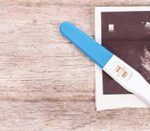(Reuters Health)—Women who have pregnancies less than a year apart may have a greater risk for osteoporosis later in life than those who wait longer between babies, a study suggests.
Researchers compared the reproductive histories of 239 postmenopausal women with osteoporosis to 298 similar women without thinning bones. Pregnancies no more than 12 months apart were linked to a four-fold higher risk of osteoporosis, the study found.
“We already know from previous studies that postmenopausal osteoporosis is directly influenced by the pregnancy itself as well as other variables in obstetric history such as breastfeeding and age at first pregnancy,” said lead study author Dr. Gulcin Sahin Esroy, a researcher at Yale School of Medicine in New Haven, Connecticut.
“As the results of our study suggest, we believe women should wait two years between pregnancies,” Esroy said by email.
Women go through menopause when they stop menstruating, which typically happens between ages 45 and 55. As the ovaries curb production of the hormones estrogen and progesterone in the years leading up to menopause, and afterwards, the body slows production of new bone tissue and women can face an increased risk of osteoporosis.
For the current study researchers analyzed bone tissue of postmenopausal women and found in addition to brief intervals between pregnancies, a first pregnancy before age 27 may also increase the risk of osteoporosis.
The researchers didn’t find a difference in osteoporosis risk between women who waited two to three years between pregnancies and women who had a gap of more than five years.
It’s possible that the study results were skewed by women’s inaccurate recollections of the timing between pregnancies, and the researchers didn’t look at other factors that can influence osteoporosis risk such as diet, exercise and use of birth control pills, the authors acknowledge in the journal Maturitas.
During pregnancy, there is a shift in skeletal calcium from mother to growing baby, and women typically regain calcium between pregnancies once breastfeeding is completed, said Dr. James Liu, a researcher at Case Western Reserve University in Ohio and board member of the North American Menopause Society.
One year between pregnancies may not give women enough time to regain bone density lost during pregnancy, leaving them at a disadvantage years later when they go through menopause, Liu, who wasn’t involved in the study, said by email.
“Pregnancy and nursing probably interrupts a woman’s ability to increase her bone mass or can cause it to decrease,” said Dr. Nanette Santoro, chair of obstetrics and gynecology at the University of Colorado School of Medicine in Denver.
